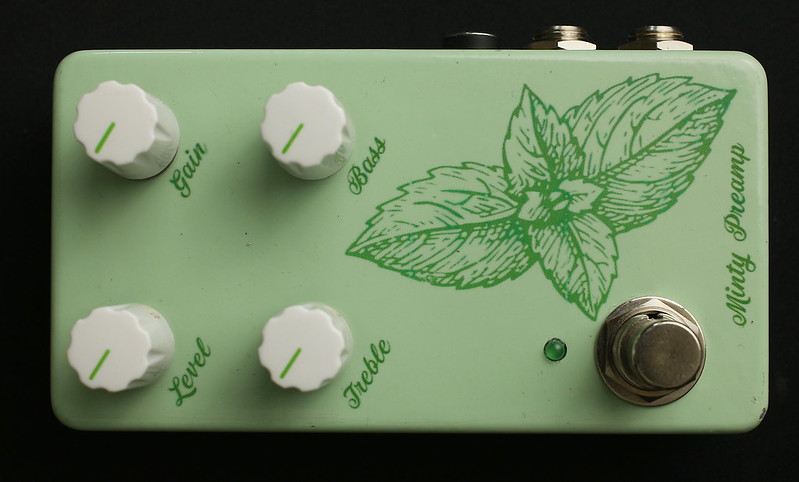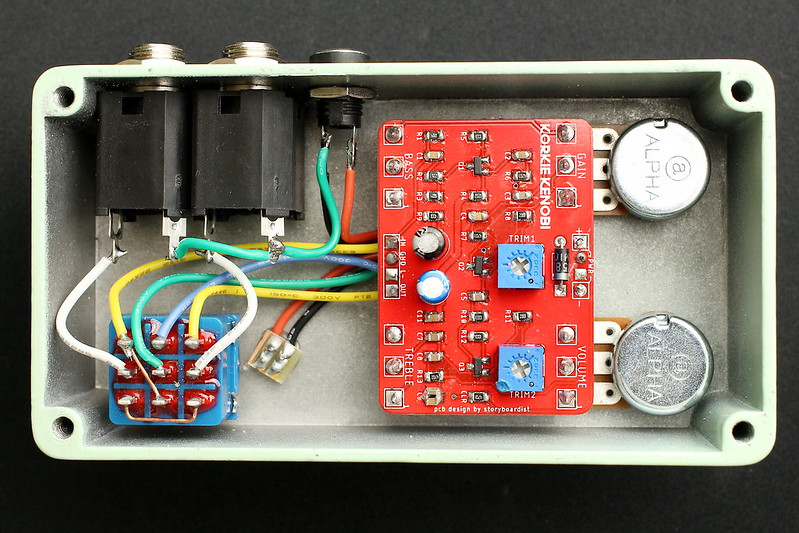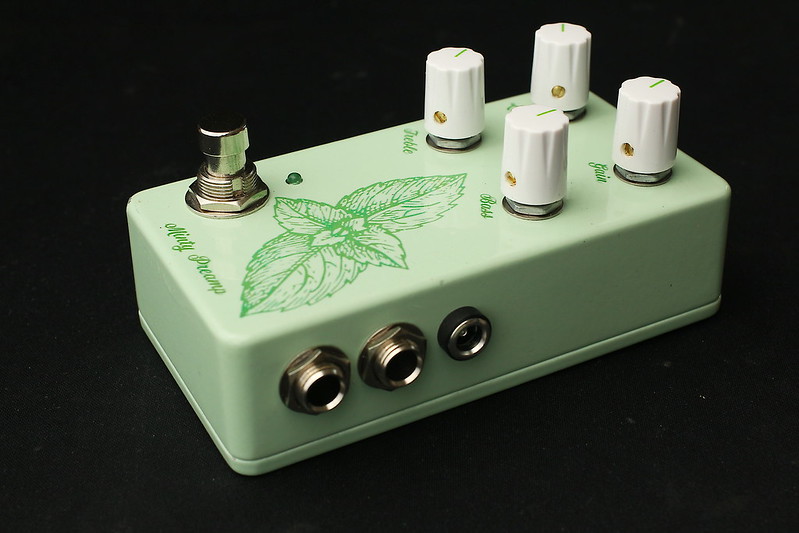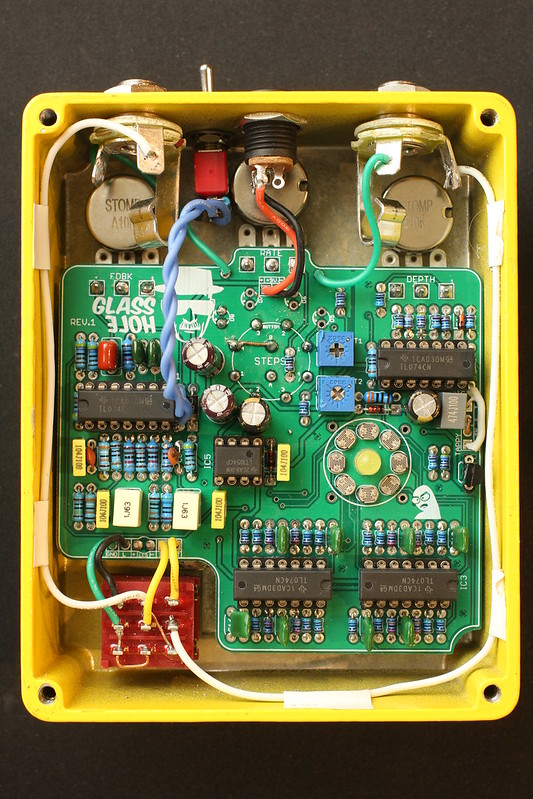This project started when I was toggling between two different dirt boxes with very different characters and thought to myself, "These would sound great in a mix together if I double tracked guitar with them!" My next thought was, "Why double track when I can just split the signal and run the effects in parallel?!" The result is the Peacock Parallel Fuzz: two distinctly voiced fuzzes that can be run independently or in parallel.

I had originally planned a two-tone finish on the enclosure with water slide decal graphics and labels, but a defect in the powder coat precluded this. I went for hyrdodip instead.

Boxing was as thrilling as a 1590A build despite being a 125B. This was a cram!
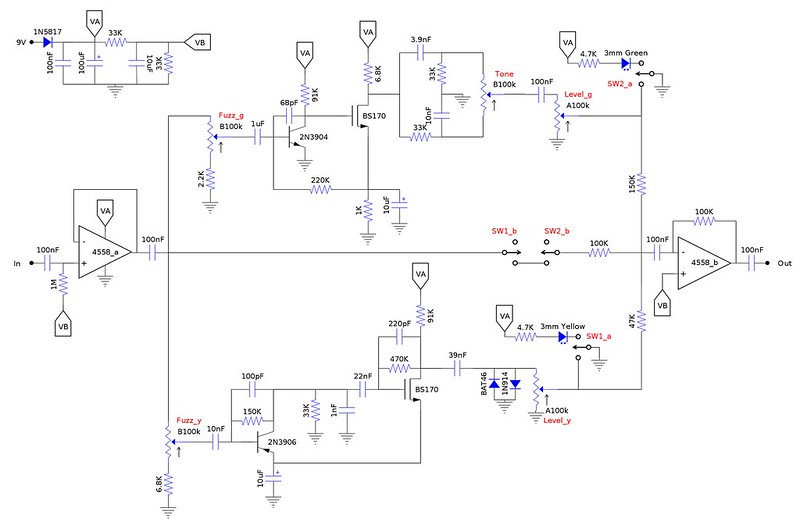
An input buffer feeds two fuzz circuits which are then mixed by an active mixer at the output. The "bybpass" switches really just cut off the clean input when the fuzz is engaged and ground the LED, or ground the fuzz output when the fuzz is off.
The yellow channel is a Harmonic Percolator that has been voiced to be as mid-range focused and percussive as possible. This stock circuit does not like being placed after a buffer. I tested a few different ways to address this including series resistance at the input and a pickup emulator and found that a mosfet in Q2 behaves much more nicely than a BJT and doesn't require any of these other, more involved solutions.
The green channel is a Fuzz Face doing its best Big Muff impression. The feedback resistor has been greatly increased to increase the available saturation. The mosfet in Q2 helps with this as well (and makes the circuit play nice with the input buffer). The tilt eq is voiced to be especially scooped. This leaves room for the yellow channel to poke through when the two fuzzes are used together.
Here' s a demo:
https://youtu.be/5pBw0EiVOWg
Here's the vero layout in case any one wants to build their own.
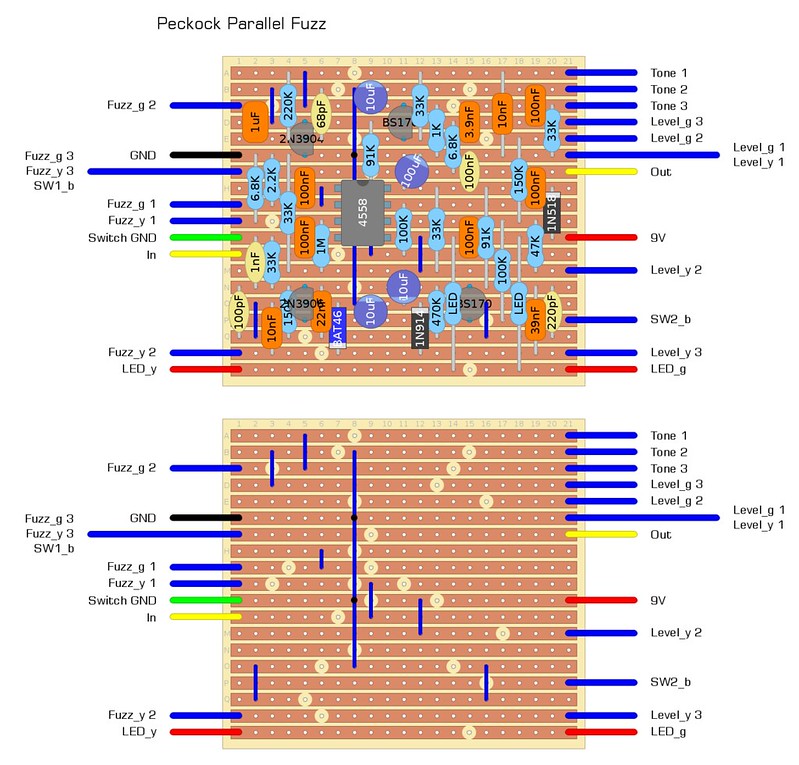
And here's the bypass layout since it might not be obvious from the schematic.


I had originally planned a two-tone finish on the enclosure with water slide decal graphics and labels, but a defect in the powder coat precluded this. I went for hyrdodip instead.

Boxing was as thrilling as a 1590A build despite being a 125B. This was a cram!

An input buffer feeds two fuzz circuits which are then mixed by an active mixer at the output. The "bybpass" switches really just cut off the clean input when the fuzz is engaged and ground the LED, or ground the fuzz output when the fuzz is off.
The yellow channel is a Harmonic Percolator that has been voiced to be as mid-range focused and percussive as possible. This stock circuit does not like being placed after a buffer. I tested a few different ways to address this including series resistance at the input and a pickup emulator and found that a mosfet in Q2 behaves much more nicely than a BJT and doesn't require any of these other, more involved solutions.
The green channel is a Fuzz Face doing its best Big Muff impression. The feedback resistor has been greatly increased to increase the available saturation. The mosfet in Q2 helps with this as well (and makes the circuit play nice with the input buffer). The tilt eq is voiced to be especially scooped. This leaves room for the yellow channel to poke through when the two fuzzes are used together.
Here' s a demo:
https://youtu.be/5pBw0EiVOWg
Here's the vero layout in case any one wants to build their own.

And here's the bypass layout since it might not be obvious from the schematic.



